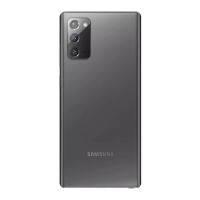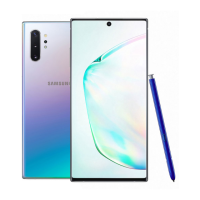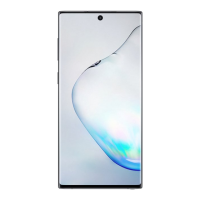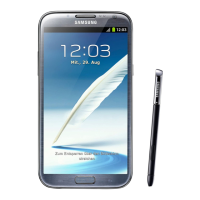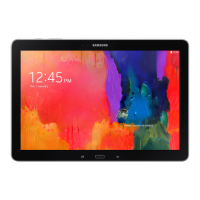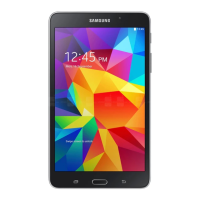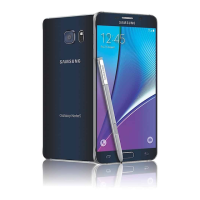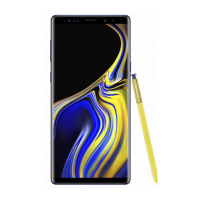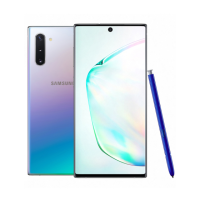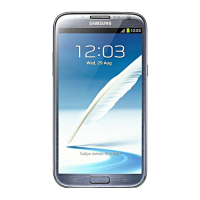
Do you have a question about the Samsung Galaxy Note 20 Ultra 5G and is the answer not in the manual?
| RAM | 12GB |
|---|---|
| Storage | 128GB / 256GB / 512GB, expandable via microSD |
| Front Camera | 10 MP |
| Battery | 4500 mAh |
| Dimensions | 164.8 x 77.2 x 8.1 mm |
| Weight | 208 g |
| Colors | Mystic Bronze, Mystic Black, Mystic White |
| Water Resistance | IP68 |
| Display | 6.9 inches, Dynamic AMOLED 2X, 1440 x 3088 pixels |
| Processor | Exynos 990 (Global) / Qualcomm Snapdragon 865+ (USA) |
| Main Camera | 108 MP (wide), 12 MP (periscope telephoto), 12 MP (ultrawide) |
| Operating System | Android 10, upgradable to Android 13, One UI 5 |
| Connectivity | 5G, Wi-Fi 6, Bluetooth 5.0, NFC, USB Type-C |
| S Pen | Yes, Bluetooth enabled |
Initial device setup, including charging, SIM card insertion, and initial configuration.
Basic operations for using the device after setup, including powering on/off.
Explains touch gestures like Tap, Swipe, Drag and drop, and Zoom for device interaction.
Introduction to the S Pen, its functions, removal, and configuration.
Setup and management of Face Recognition and Fingerprint scanner for device security.
Connecting the device to Windows PCs for seamless operation and using Samsung DeX.
Using the camera app, navigating the interface, and exploring shooting modes.
Viewing, editing, and managing photos and videos stored on the device.
Instructions for recording high-quality videos and using various video modes.
Configuring intelligent features, picture, and video quality settings for the camera.
Basic operations for managing apps, including downloading and uninstalling.
Overview of preloaded and downloadable Samsung applications and their functions.
Details on various Google applications available on the device and their uses.
Making and receiving calls, managing call logs, and using advanced calling features.
Sending and receiving text messages, managing conversations, and emergency alerts.
Browsing the web using Samsung Internet, managing tabs, bookmarks, and history.
Using Samsung Pay for contactless payments and managing payment cards.
Methods to access the device's main settings menu.
Managing network and device connections, including Wi-Fi and Bluetooth.
Connecting to Wi-Fi networks, managing saved networks, and Wi-Fi Direct.
Pairing and managing Bluetooth-enabled devices for wireless connectivity.
Configuring mobile data, roaming, and network settings for cellular connectivity.
Monitoring and managing mobile and Wi-Fi data consumption to control costs.
Creating and managing a mobile Wi-Fi hotspot to share the device's internet connection.
Customizing sound modes, ringtones, notification sounds, and vibration patterns.
Managing app alerts, customizing notification behavior, and blocking unwanted alerts.
Configuring screen brightness, dark mode, font settings, and display options.
Optimizing device performance, battery life, storage, and memory.
Setting device language, keyboards, and voice input preferences.
Resetting network settings, accessibility, and performing a factory data reset.
Securing the device with screen locks, biometrics, and managing security settings.
Configuring location services, app permissions, and improving location accuracy.
Managing Google, Samsung, and other accounts for syncing and backup.
Features to assist users with visual, audial, or dexterity impairments for easier device use.
